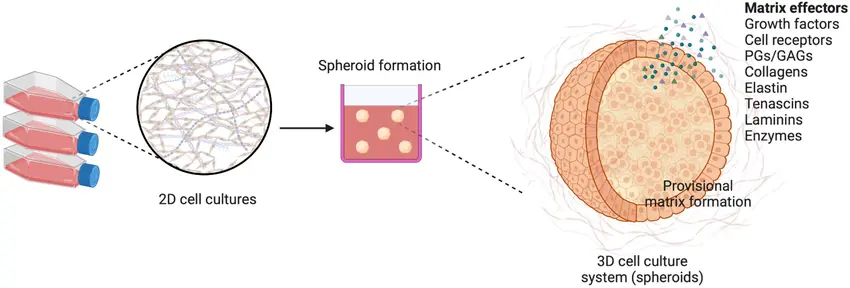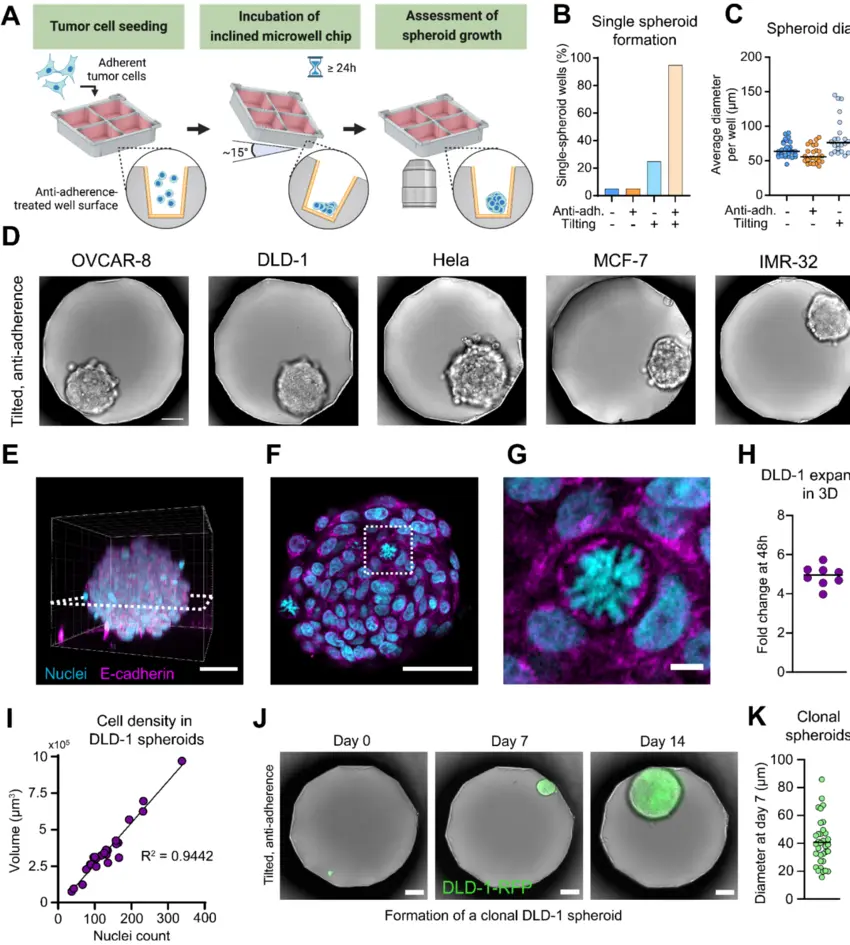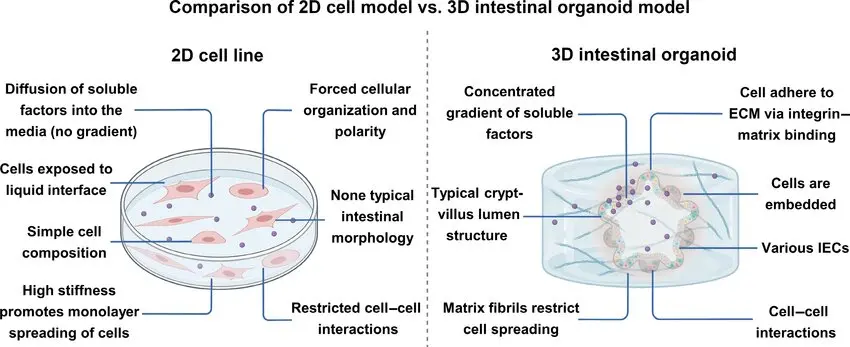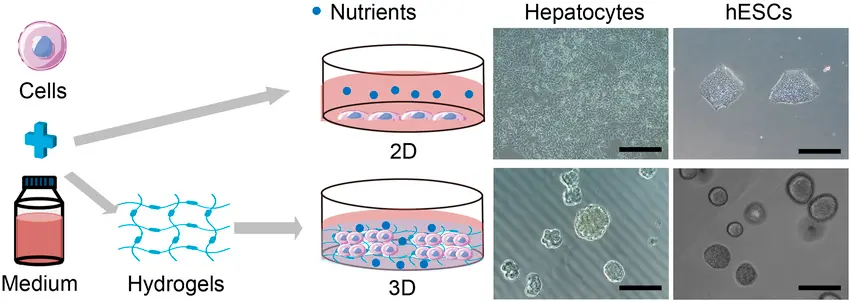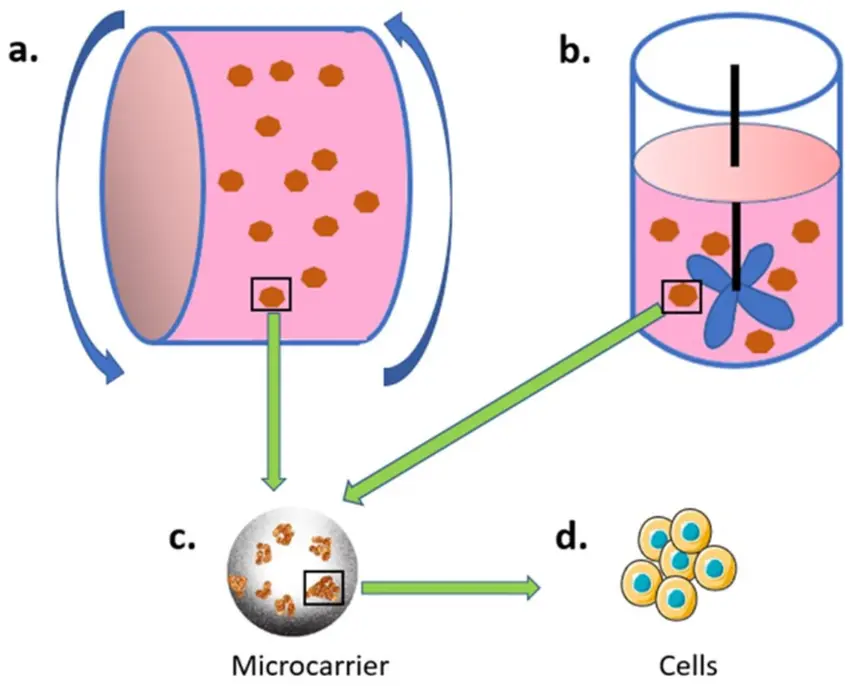👋 Introduction
In the evolving landscape of biomedical research, three-dimensional (3D) cell culture has emerged as a transformative tool. While traditional 2D cultures have provided decades of foundational knowledge, their limitations in replicating the true complexity of living organisms are now clear. Cells behave differently in flat, artificial environments than they do within tissues and organs.
3D cell culture offers a more physiologically relevant alternative, allowing researchers to simulate the intricate architecture and microenvironment of human tissues. From cancer biology to personalized medicine, 3D culture systems are shaping the future of experimental science.
🧬 What is 3D Cell Culture?
3D cell culture refers to the growth of cells in an environment that allows them to interact with their surroundings in all directions — mimicking how cells behave in living tissues. In contrast to 2D cultures, where cells grow as a monolayer on a plastic surface, 3D cultures support cell–cell and cell–matrix interactions that influence proliferation, differentiation, morphology, and gene expression.
These systems often involve the use of:
- Scaffolds (natural or synthetic biomaterials)
- Hydrogels (collagen, Matrigel, alginate)
- Hanging drop techniques for spheroid formation
- Bioreactors for dynamic culture conditions
🧠 Why 3D Cell Culture Matters
1. More Accurate Cell Behavior
In 3D, cells adopt more natural shapes, signaling pathways behave more realistically, and gene expression profiles resemble those found in vivo. This leads to more predictive and translational results, especially in cancer and drug testing.
2. Better Modeling of Tissue Physiology
3D systems reproduce the gradient of oxygen, nutrients, and metabolites seen in real tissues — including hypoxic cores in tumors or nutrient gradients in organoids.
3. Advanced Disease Modeling
3D culture enables researchers to build models of complex diseases:
- Glioblastoma spheroids
- Colorectal cancer organoids
- Liver fibrosis models
- Alzheimer’s disease via brain organoids
🧪 Types of 3D Cell Culture Systems
1. Spheroid Cultures
Spheroids are cell aggregates that form spontaneously or through low-adhesion plates. They are simple, scalable, and widely used in:
-
Tumor biology
- Hypoxia-related research
2. Organoids
Organoids are miniaturized, 3D versions of real organs, often derived from stem cells or progenitor cells. They self-organize and differentiate into organ-like structures.
Applications:
- Modeling organ development (brain, liver, kidney, gut)
- Personalized medicine (e.g., patient-derived tumor organoids)
- Studying host–pathogen interactions
- Testing responses to gene therapies
3. Scaffold-Based 3D Culture
Cells are seeded into or onto a 3D scaffold that supports their structure and interaction. These scaffolds can be:
- Natural (collagen, fibrin, hyaluronic acid)
- Synthetic (PEG, PLGA, PCL)
4. Hydrogel-Embedded Cultures
Hydrogels provide a hydrated, ECM-like environment that allows diffusion of gases and nutrients while supporting cell migration and proliferation.
Hydrogel materials:
- Collagen I
- Matrigel
- Alginate
- Gelatin-methacryloyl (GelMA)
These systems are especially useful for:
- Angiogenesis studies
- Cell invasion assays
- Neural and cardiac tissue models
5. Bioreactors & Dynamic Systems
Bioreactors create controlled mechanical, chemical, and fluidic conditions. They support large-scale tissue culture and simulate forces such as:
- Shear stress
- Compression
- Perfusion
Used in:
- Liver-on-a-chip
- Muscle and bone regeneration
- Long-term stem cell culture
🔬Applications in Biomedical Science
Cancer Research
- Tumor spheroids mimic solid tumor architecture
- Realistic drug resistance, EMT, angiogenesis modeling
-
Testing immunotherapies in a relevant microenvironment
Neuroscience
- Brain organoids model cortical layer formation
- Blood-brain barrier (BBB) models with endothelial–astrocyte coculture
- Alzheimer’s and Parkinson’s modeling
Stem Cell Research
- Differentiation into functional tissue structures
- Monitoring lineage commitment and regeneration
- Use in regenerative medicine and cell-based therapies
Virology and Infectious Disease
- Lung and gut organoids for norovirus, and influenza studies
-
Modeling viral entry, replication, and host response
Future Perspectives
The field of 3D cell culture is rapidly evolving with innovations such as:
- Organ-on-chip systems combining 3D cultures and microfluidics
- 4D culture systems (adding time as a dimension for dynamic modeling)
- Integration with CRISPR gene editing and high-resolution imaging
- AI-driven image analysis for phenotypic screening
- Personalized 3D models for individualized therapy testing
Three-dimensional cell culture marks a paradigm shift in biological research. It brings scientists closer to mimicking natural biological systems in the lab — improving the relevance, reproducibility, and impact of their work. As technologies mature, 3D models may eventually reduce the reliance on animal testing and accelerate the development of safe and effective therapies.
For further information
Here you can find a current, comprehensive article on this topic:
The application of three-dimensional cell culture in clinical medicine
